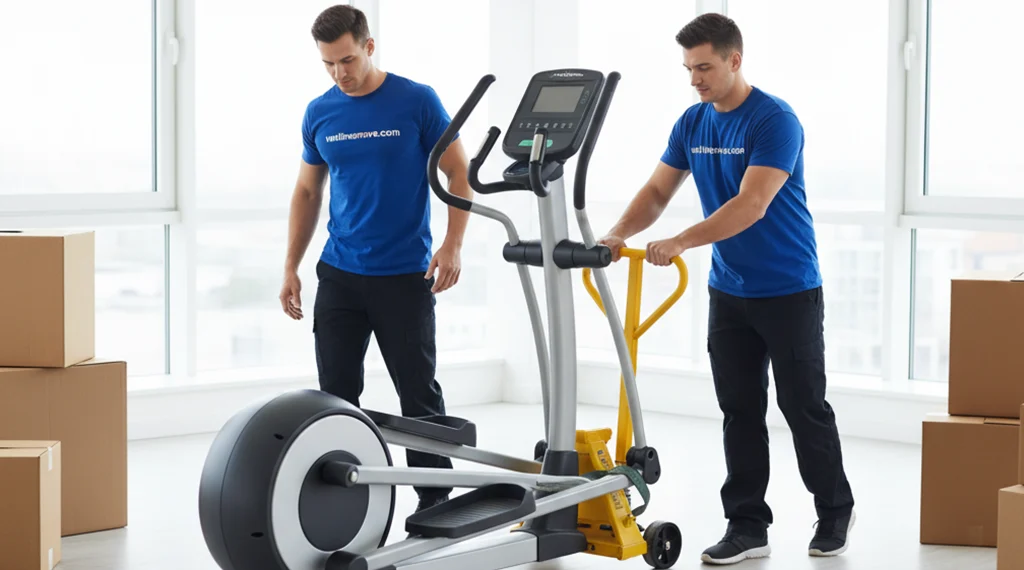How Much Does an Elliptical Weigh?

Elliptical machines are a favorite in many homes and gyms because they provide a low-impact cardio workout. But when it’s time to move, their bulky size and heavy weight make them one of the most challenging pieces of exercise equipment to handle. If you’re wondering “How much does an elliptical weigh?” — here’s a complete breakdown.
Average Weight of an Elliptical
The weight of an elliptical varies depending on its type, size, and features. On average:
- Compact/Home Ellipticals: 70–120 lbs
- Standard Residential Ellipticals: 120–180 lbs
- High-End/Commercial Ellipticals: 200–250+ lbs
👉 The heavier the machine, the sturdier and more stable it is during workouts — but that also means extra effort when moving.
Factors That Influence Elliptical Weight
Several features affect how heavy an elliptical is:
- Flywheel Size – Larger flywheels add resistance and stability but also increase weight.
- Frame Material – Steel frames are durable but heavier than lightweight alloy or foldable frames.
- Built-in Features – Machines with screens, incline motors, and advanced resistance settings weigh more.
- Commercial vs. Residential Models – Gym-grade ellipticals are built for heavy use and are significantly heavier.
Challenges of Moving an Elliptical
Moving an elliptical isn’t just about the weight — it’s also about the shape and size. These machines are bulky, awkward to grip, and difficult to maneuver through doorways, hallways, or staircases. Some common challenges include:
- Risk of injury from improper lifting
- Potential scratches or damage to walls/floors
- Disassembly and reassembly requirements
Tips for Safely Moving an Elliptical
If you’re relocating your elliptical, here’s how to do it safely:
1. Disassemble if Possible
Remove pedals, handlebars, or the console (if detachable). This makes the machine lighter and easier to handle.
2. Use Moving Straps or a Dolly
These tools help distribute the weight and reduce strain when lifting or rolling the machine.
3. Protect the Equipment
Wrap the elliptical in moving blankets or shrink wrap to prevent scratches and protect electronic parts.
4. Ask for Help
Don’t try moving an elliptical alone — at least two people should handle it safely.
5. Hire Professionals
For commercial-grade ellipticals or moves involving stairs, it’s best to hire professional movers who specialize in fitness equipment.
Conclusion
Elliptical machines typically weigh between 70 lbs and 250+ lbs, depending on their type and features. While their weight ensures durability and stability, it also makes them tricky to move. Whether you’re relocating your home gym or transporting a commercial machine, plan ahead with the right tools, helping hands, or professional movers to avoid injury and damage.
Categories
- Moving Abroad & International Relocation153
- Moving Tips & How To Guides119
- Moving Tips & Specialty Moving40
- Moving Tips & How-To Guides34
- Car Shipping & Auto Transport25
- Moving Tips & Cost Guides9
- Moving Tips & Relocation Advice5
- Long-Distance Moving Guides3
- Moving Guides & Lifestyle3
- Moving Cost Guides3
- International Moving & Expat Living2
- Specialty Moving & Cost Guides2
- Moving Tips & How-To Guides2
- Moving Costs & Planning2
- Car Shipping & Moving Guides1
- International Moving Guides1
Recent posts
-

How Much Do Movers Cost in Boise? – Complete 2026 Guide
December 2025 -

How Much Do Movers Cost in California? – 2026 Pricing Guide
December 2025 -

How Much Does It Cost to Move a Small Apartment? – Complete 2026 Cost Guide
December 2025 -

How Much Do Movers Cost in Atlanta? Full Guide & Pricing Breakdown
December 2025

 Local Movers
Local Movers Last-Minute Movers
Last-Minute Movers Junk Removal
Junk Removal Long Distance Movers
Long Distance Movers Piano Movers
Piano Movers Heavy Equipment
Heavy Equipment Commercial Movers
Commercial Movers Moving Container
Moving Container Car Transportation
Car Transportation Furniture Movers
Furniture Movers Truck Rental
Truck Rental Moving Cost Calculator
Moving Cost Calculator Moving Planner
Moving Planner Packing Calculator
Packing Calculator Moving Checklist
Moving Checklist Moving Insurance
Moving Insurance FAQ
FAQ Contact Us
Contact Us Moving Loan
Moving Loan About Us
About Us







